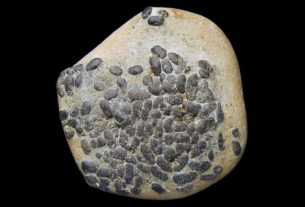A team of researchers has announced the discovery of the remains of a young man who was killed around 3,600 years ago by a tsunami created by a massive volcanic eruption. Details of this work are published in the Proceedings of the National Academy of Sciences (https://www.pnas.org/content/119/1/e2114213118)
A cataclysmic explosion
About 3,600 years ago, an incredibly powerful volcanic eruption (classified in category 7 out of 8 on the explosiveness index) took place in Thera (now Santorini), in the Aegean Sea, between southern Greece and southern Turkey.
The explosion, estimated to be 100 times greater than the one that destroyed Pompeii, claimed more than 30,000 lives, radically transforming the topography of the region. The event was so powerful that it is today considered responsible for the decline of Minoan civilization on the island of Crete.
Now, we knew that just as it was in Pompeii several centuries later, the ancient city of Akrotiri, built on the island, had been buried under a thick layer of ash and pumice stones. However, the eruption also had other consequences, including the formation of several tsunamis.
In general, tsunamis tend to wash off what they catch at the coasts, as the waters recede. This is why the remains of those killed in these events tend to disappear. In the present case, no human body affected by the Thera eruption has so far been found. It is now done.
A man and a dog
The site had previously yielded several Bronze Age artifacts in recent years, but it was only recently that researchers isolated evidence of several successive tsunamis.
The remains of a young man were indeed found at a dig site along a shore of Cesme Bay in western Turkey. These remains were found pushed against a retaining wall.
In addition to the young man’s remains, researchers also found the remains of a dog in a doorway nearby. Radiocarbon dating of the material surrounding these remains suggests that both humans and dogs died in 1612 BC. AD, which now makes it possible to precisely date the eruption of Thera.
Finally, the researchers point out that they also isolated “misshapen pits”, probably created by people looking for victims shortly after the tsunami.
Image Source: National Geographic




